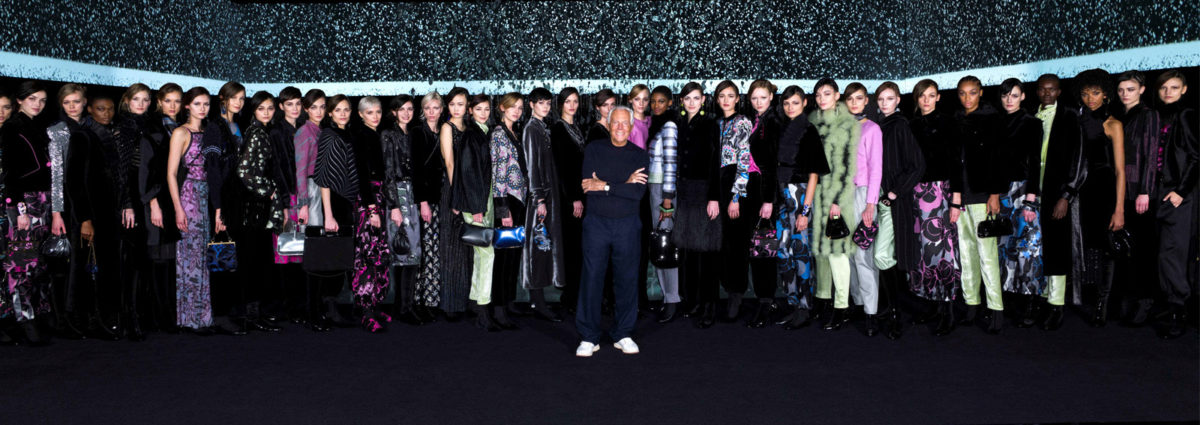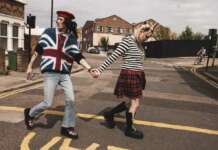

Interrupted supply chains, fashion week deleted e Prevention with many zeros: the fashion has to deal with the consequences, inevitable, of Coronavirus.
A whole production system chain from the immense weight one is suddenly stop, breaking, without really saving anyone.
The drama of the present
Dai "creative" roles of photographers, make-up artists and stylists (especially the independent and emerging ones), to those more operational of shop assistants, employees and buyers, these are just some of the most affected trades in a sector that today suffers like never before.
Pending payments and canceled orders
One of the category more issues e at risk it is that of the workers of the textile industries of half the world, especially those of South East Asia, which are suffering dramatically from the effects of the pandemic.
The causes are mostly i suspended payments and canceled orders o postponed by large groups (except Zara and H&M which, they announce, will conclude the orders sent without price renegotiations), "rescue" measures also adopted to cope with warehouses full of unsold items.
Collapse of sales
Then there is the problem of sales: if on the one hand the bulk of the'online market continue to guarantee shipments (increasing the days for returns and exchanges as Zara and Asos are doing, for example), this is not enough because it still remains a small percentage of the total turnover (we are talking about 20%).
(Credits: Instagram) BoF
Secondo BoF, the sale in the luxury sector of physical stores, covered about the 90%, representing for the consumer more a 360-degree experience than a simple purchase, which in any case would be superfluous these days cause lock-down.
Faced with so many uncertainties and fears, they arise science fiction questions, like the one between provocation and reality of the president of the Italian Chamber of Buyers Francesco Tombolini, which has proposed to skip a season and re-propose the SS 20 collections currently in stores, in 2021. Thus eliminating even a little time but posing new unknowns.
(Credits: Instagram) Buyer room
Events canceled with no choice
Most of the institutional events, has been postponed to a later date, certainly until September: from Cruise, To FW man, All 'Haute Couture, Pitti until the highly anticipated Met Gala, are just some of the events of the fashion system (which gave a lot of work) to jump one after the other.
(Credits: Instagram) Pitti Immagine
What does the communication communicate?
And then there are the medium, printed paper e online, forced between concrete difficulties such as ADV cuts e inability to shoot e compose services and more intellectual doubts related to content with more or less successful attempts to find the right key looking for a difficult balance between lightness and entertainment, remaining in context with what is happening.
(Credits: Instagram) Grazia Italy
Leave before it's too late
At this point though restart as soon as possible is no longer a wish but a necessity, as declared by the president of the Chamber of Fashion Charles Capasa in an open letter to the government published in Repubblica, in which he argues that if the companies will not open by 20th April, Italian fashion could lose its European pre-eminence “If we want to continue to have a fashion industry in Italy we must immediately resume producing fashion as well. With the pride of doing it not only for us but also for the future generations of this wonderful country of ours "."
(Credits: Instagram) Chamber of Fashion
An opportunity to adjust the shot
But if as he said Paolo Coelho "The darkest hour is the one before sunrise", this may be the time for the fashion di reflect e reinvent itself, perhaps even learning from past mistakes.
It is difficult to pretend to predict what will happen: there are those who are thinking of a radical change and those who wish for a long-term return to "Normality", improved and stronger than before.
Not without some significant adjustment it sees in ethics, digitization ed sustainability keywords.
A new rhythm for the fashion sector?
Il fashion sector it will not necessarily have to revolutionize but rather reflect to renew itself with a return to the past, as the young designer suggests Nicholas Brognano (new creative director of Blumarine) in a recent interview with MFF, slowing down the pace e taking stock of consumer attitudes.
(Credits: Instagram) Nicholas Brognano
Pre, resort, collab, capsules were just a clue to a fast and unnerving fashion, which for some no longer represented consumers but only marketing and "Money making".
Una rebirth which, according to many designers like Massimo Giorgetti, Lorenzo Serafini e Giorgio Armani, would bring the Made in Italy: to rediscover their origins and the DNA of each brand with collections targeted, reduced and the less "Dated" possible, that go beyond the concept of the season. #Reset
(Credits: Instagram) Giorgio Armani
For the umpteenth time since the outbreak of Covid-19, in a letter to WWD, Armani he then pioneered concrete solutions like optimize delivery dates of production by reducing (or skipping) pre-collections, reduce events e make them more local (like the very expensive Cruise) to give a special value to authenticity and delay the balances from July to September to allow the collections to remain in boutiques and be sold a little more at full price.
We will have new needs and a desire for normality ...
But when we really see the light at the end of the tunnel, what will we do? What do we really want? Will there be a spike in expenses or just fear? And when we go shopping, what will we buy?
If second Forbes, among the main searches of the average consumer in quarantine are yeast, board games, sanitizing wipes and sports equipment, BoF suggests that after the lock down you might want to buy less but better.
La fashion what we will need after this pandemic will truly be a fad collection? We will wish clothes that last and that go beyond the passing trends we used to give up every season?
(Credits: Instagram) The Row
The hypothesis could be true: we will be more likely to appear classic piecesie "Reassuring", i wardrobe fundamentals, a bit' as after the crisis of 2008, where we had found discretion "No logo" di Celine e Bottega Veneta a stylistic comfort. #Minimalism
(Credits: Instagram) Bottega Veneta
And then there is digitization ...
If on the one hand you will feel the need to slow downon the other hand there is the urgent need for experiment with solutions increasingly interactive proof social distancing.
Il innovation process it was suddenly accelerated: for the companies thanks to fitting e virtual corrections as the young brand does GCDS, for the press office like Karla Otto e Guitar through the organization of a "Digital press day" via IG to show client work to the press, for showroom like Massimo Bonini e Richard Grassi with virtual sales campaigns through line-sheet.
>>
(Credits: Instagram) GCDS
Innovative and original are the "home made" shooting among which the experiment of Willy Vanderpierre for ID magazine who photographed 19 models via FaceTime or our own one from SDF Factory, a digital marketing agency, which has organized home photo shoots to ensure social photographic material for its brands.
(Credits: Instagram) ID Magazine
The emergency has led to the use of new forms of communication such as webinar e masterclass su Zoom e Instagram Live, of platforms unexplored social networks like Weibo for Gucci and in general a necessity of implement organisers' activities e digital strategies in the round.
Not to mention the initiatives which, to compensate for the closure of the museums, combine e fashion like the virtual exhibitions of GOES su Balenciaga e Schiapparelli, the contemporary art experiments of Fondazione Prada which has become a laboratory of ideas, the MET which promotes its successes via social media with the hahstag #MetAnywhere e Louis Vuitton who launched the FLV From Home, a program of exhibitions, concerts and talks via YouTube and Facebook to entertain your audience.
(Credits: Instagram) Victoria and Albert Museum
On social media, the inflencers show a more human and communicative side, decidedly less commercial, in support of #StayAtHome e #WeAreInThisTogether
The sustainability theme
Finally, a general wish is the eye on sustainability with real actions e tangible, not as a front page marketing tool.
(Credits: Instagram) Jacquemus
Eco-sustainability made up of new dynamics such as less travel and more intimate shows, just like he did Jacquemus in the now distant June 2019: on the occasion of its tenth anniversary, the maison presented the collection "Coup de soleil" between French lavender fields with few guests and local influencers and consequently with very small movements.
Without forgetting the successful experiment of fashion shows in streaming su virtual walkways, like those of Shanghai fashion week e Tokyo, which would reduce very expensive journeys (but at the same time would pose the problem of buyer who buy the collection immediately after the show).
(Credits: Instagram) BoF
This forced break puts on the table questions, reflections e new ideas. Perhaps it will be the latter who will carry the post lock-down fashion to reach those goals which for a long time had set itself but which until now had mostly remained only on paper and in social media ads?
The post The fashion that will be: how will the fashion industry change after the Coronavirus? Appeared first on Grace.

































 : @gettyimages
: @gettyimages


 Each week, a new article from GCDS, re-draws, re-invents and every Friday 8PM GMT there will be a winner.
Each week, a new article from GCDS, re-draws, re-invents and every Friday 8PM GMT there will be a winner. 
 The 1910s and 1920s saw a rise in kimono-inspired fashion design. Vote for your favorites in our story!
The 1910s and 1920s saw a rise in kimono-inspired fashion design. Vote for your favorites in our story! 
















